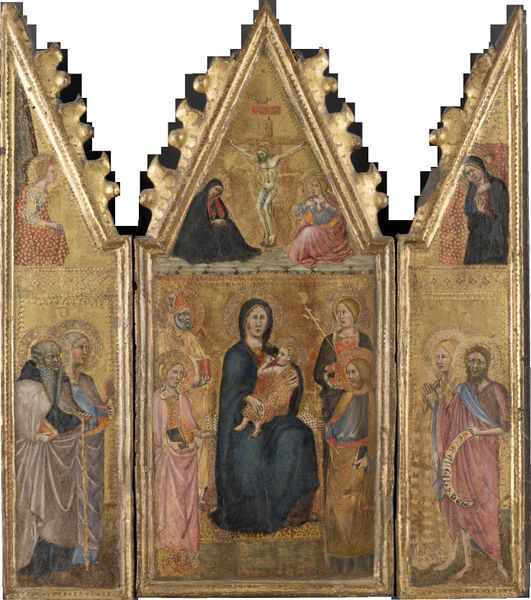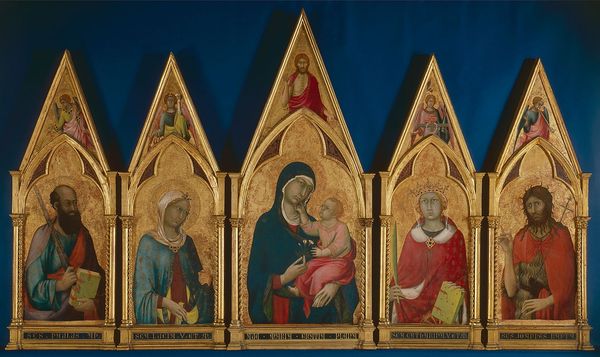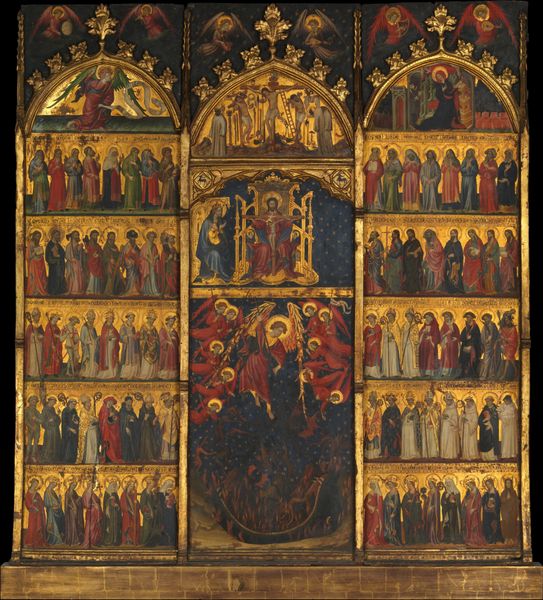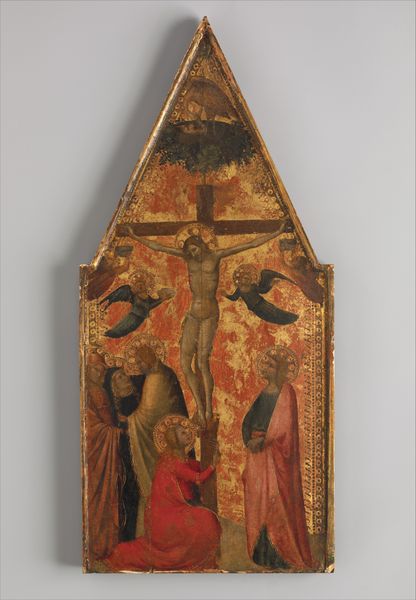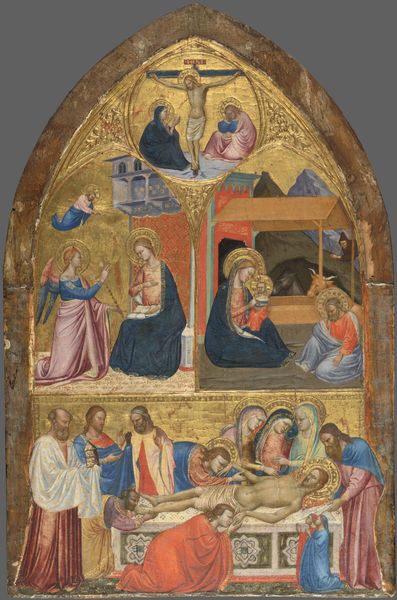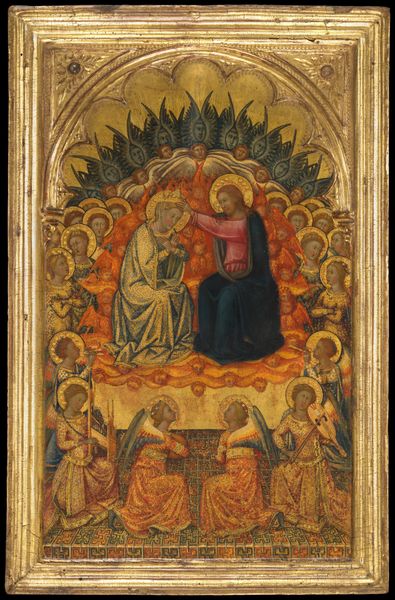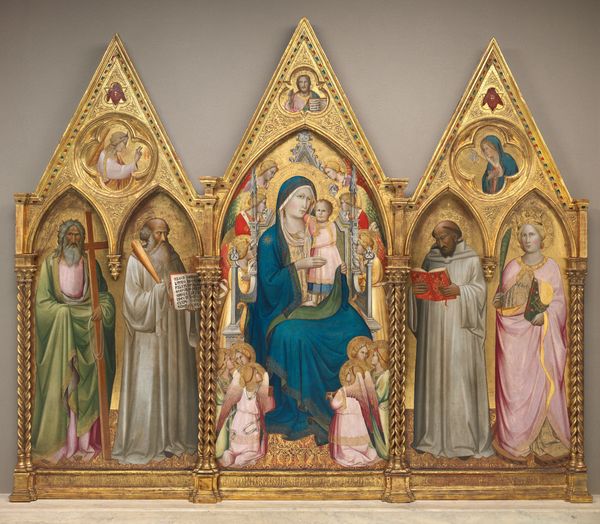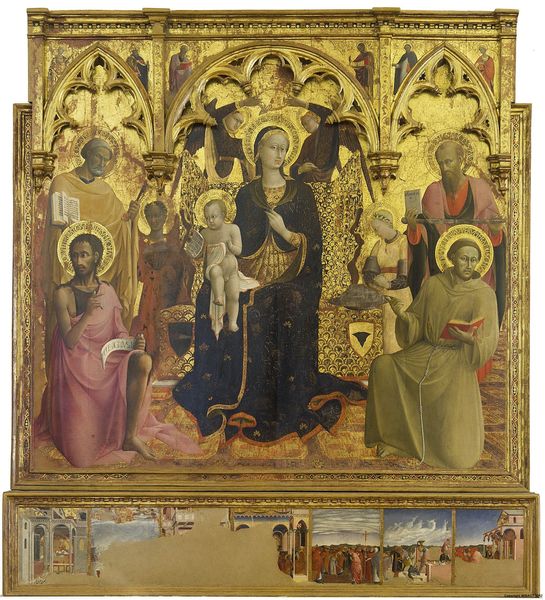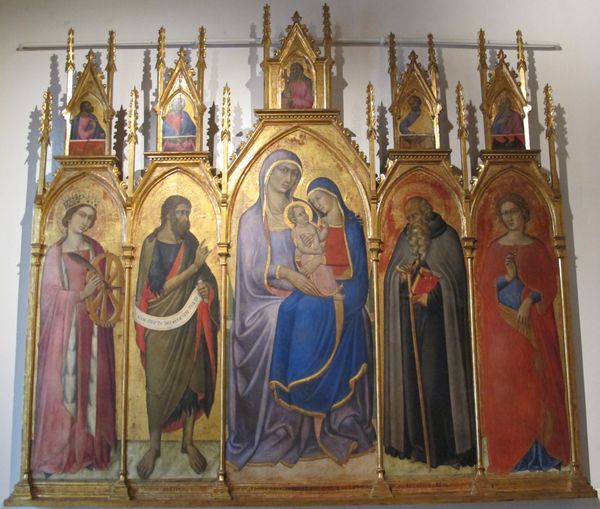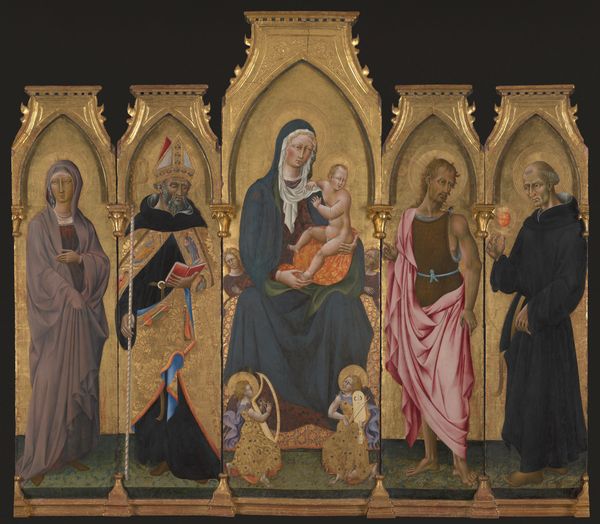
Madonna and Child Enthroned with Saints Peter, Bartholomew, Catherine of Alexandria, and Paul, and (below) the Nativity; left wing (top to bottom): Annunciatory Angel, Crucified Christ with the Virgin, Saints Mary Magdalen and John, and Christ as the Man of Sorrows; right wing (top to bottom): Virgin Annunciate, Saints Onophrius and Paphnutius, and Saint Onophrius Buried by Saint Paphnutius. 1380 - 1390
0:00
0:00
tempera, painting
#
medieval
#
narrative-art
#
tempera
#
painting
#
madonna
#
child
#
underpainting
#
painting painterly
#
painting art
#
crucifixion
#
history-painting
#
italian-renaissance
Dimensions: Central panel 17 1/2 x 8 in. (44.5 x 20.3 cm); left wing 16 7/8 x 4 1/2 in. (42.9 x 11.4 cm); right wing 17 1/8 x 4 5/8 in. (43.5 x 11.7 cm)
Copyright: Public Domain
This is "Madonna and Child Enthroned with Saints," a late 14th-century tempera on wood, by Matteo di Pacino. At first glance, the triptych leaps out with its luminous gold ground. The symmetrical arrangement of figures around the central Madonna creates a balanced, hierarchical composition typical of its time. Pacino uses line and color to structure meaning. Notice the crisp outlines defining each figure, set against the soft modeling of their faces and drapery. The hierarchical scale places the Madonna at the center, flanked by saints whose gestures invite us into the sacred space. Gold, a non-naturalistic element, flattens the space, emphasizing the divine rather than the earthly. Pacino’s work exists at a moment when art was deeply entwined with religious and social structures. The semiotic system is clear: gold signifies divinity, certain colors denote specific saints, and the composition reinforces a cosmic order. Yet, within these constraints, Pacino’s expressive figures hint at a move towards greater naturalism. Consider how the flatness of the gold coexists with the subtle shading of faces, creating a tension between symbolic representation and the emerging naturalistic impulses. It is in these tensions, in these formal qualities, that the artwork invites us to contemplate the changing world and the complex interplay of tradition and innovation.
Comments
No comments
Be the first to comment and join the conversation on the ultimate creative platform.
